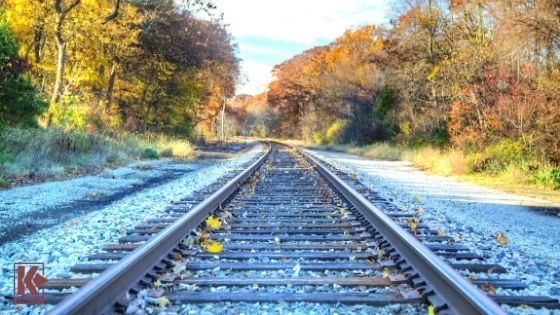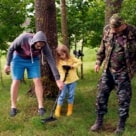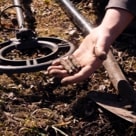Metal Detecting Old Railroad Tracks and Camps
Published by Carolyn Yohannes on 07/06/18
If you’re looking for new sites to metal detect, consider old railroad tracks and camps. They’re often great places for finding coins and jewelry as well as hunting for relics because they have a lot of history. These areas may have old bunkhouses where railroad workers stayed, small hotels and stores that were created for the semi-transient lifestyle that those workers lived, and supply bunkers where tools were kept. These camps saw a great deal of activity and can be hot spots for finding historical treasure.
History of Railroad Tracks and Camps

Railroad Tracks
The history of railroad camps goes back to the 1800s when the first railroads began popping up across the U.S. As the railways expanded, they started to take replace canals as the main source of transportation.
The 1830s saw quite a boom in the creation of railroad camps as the construction of the railway was thriving. Workers would set up camps, work hard during the daylight hours, and then have dinner and spend their evenings drinking and sometimes gambling. You can see why these areas have a rich history and are prime locations for metal detecting.
You might wonder how you can find old railroad camps to hunt. It’ll likely take some research. There are a couple of resources that will help you. One is a book called Right-of-Way: A Guide to Abandoned Railroads in the United States, by Waldo Nielsen. The book lists sites across the country where old railways and camps are located. Another resource for finding old railroad sites is the website abandonedrails.com. It provides a map of the U.S. with old railway sites marked. You can also visit your local library where there will be historic maps of your area that show where you might find abandoned tracks and camps close to home.
Obtaining Permission

Treasure Awaits
Obtaining permission to hunt on these sites can be tricky – some are on private property, some are on federal land, and some may still be owned by railroad companies. Depending on the specifics of the site you want to hunt, you may face some challenges getting permission to detect there. But keep in mind, sites that require extra effort to get approval to search probably haven’t seen many other detectorists. It’s always exciting to detect on a site that hasn’t already been hunted.
Final Word
Once you’ve gotten permission and you start your search, be sure that you plan your hunt to include the surrounding woods or other landscape. That is often where the most activity took place. You may come across sites where old camp buildings are still preserved, but in many cases, they will be long gone. That means that you’ll have to search the surrounding areas where the camps may have been.
Old railroad tracks and camps can be worthwhile sites to detect when you take the time to research and are able to get the necessary go-ahead from the landowner. Who knows? You may find some interesting pieces of history!

